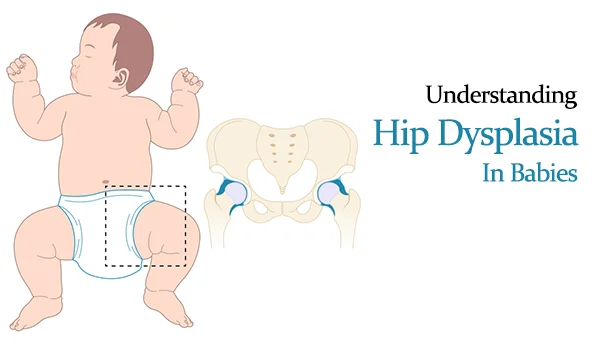Understanding Hip Dysplasia in Babies
What is Hip Dysplasia?
Hip dysplasia, also known as developmental dysplasia of the hip (DDH), occurs when the upper thigh bone’s ball section (femoral head) is not entirely covered by the hip socket (acetabulum). This can lead to a dislocated or loose hip joint. Hip dysplasia can range in severity from mild cases where the hip is slightly misaligned to severe cases where the hip is fully dislocated.
Causes of Hip Dysplasia in Babies
- Babies with a family history of hip dysplasia are more likely to develop the disorder.
- Breech Position: Babies born in a breech position (buttocks or feet first) are more likely to develop hip dysplasia due to improper pressure on the joint.
- Gender: Female babies are more likely to develop hip dysplasia than male babies, presumably due to hormonal differences.
- Firstborn Babies: Firstborn children are at a higher risk, presumably due to the smaller womb space.
- Swaddling Practices: Incorrect swaddling, which tightly binds the baby’s legs, might contribute to hip dysplasia.
Symptoms of Hip Dysplasia in Babies
- Asymmetrical Thigh Folds ; Gluteal folds
- Limited Range of Motion
- Clicking or Popping Sounds
- Uneven Leg Lengths
- Delayed Crawling or Walking
- Abnormal walking
Diagnosis of Hip Dysplasia
- Physical Examination to check hip instability and the range of motion.
- Ultrasound for a clear image of the hip joint.
- X-rays to assess the hip structure.
Treatment Alternatives for Hip Dysplasia
Hip dysplasia treatment is determined on the severity of the condition and the age of the child.
- Pavlik Harness: A soft brace for kids under six months that keeps their hips in the appropriate posture to support normal development.
- Closed Reduction: A treatment in which the hip is physically relocated and placed in a body cast to retain its proper position.
- Open Reduction: A surgical method used to rectify severe cases after other therapies have failed.
- Ongoing Monitoring: It includes regular follow-up consultations and imaging to track hip growth.
Accord Hospital, renowned as the best child hospital in Faridabad, excels in treating hip dysplasia in babies. With state-of-the-art facilities and advanced medical technologies, Accord Hospital provides comprehensive care for infants with hip dysplasia. The hospital is home to the best pediatric surgeon in Faridabad, who specializes in diagnosing and treating developmental dysplasia of the hip (DDH) with precision and expertise. Parents can trust Accord Hospital for its exceptional care, ensuring the best possible outcomes for their children’s hip health.


